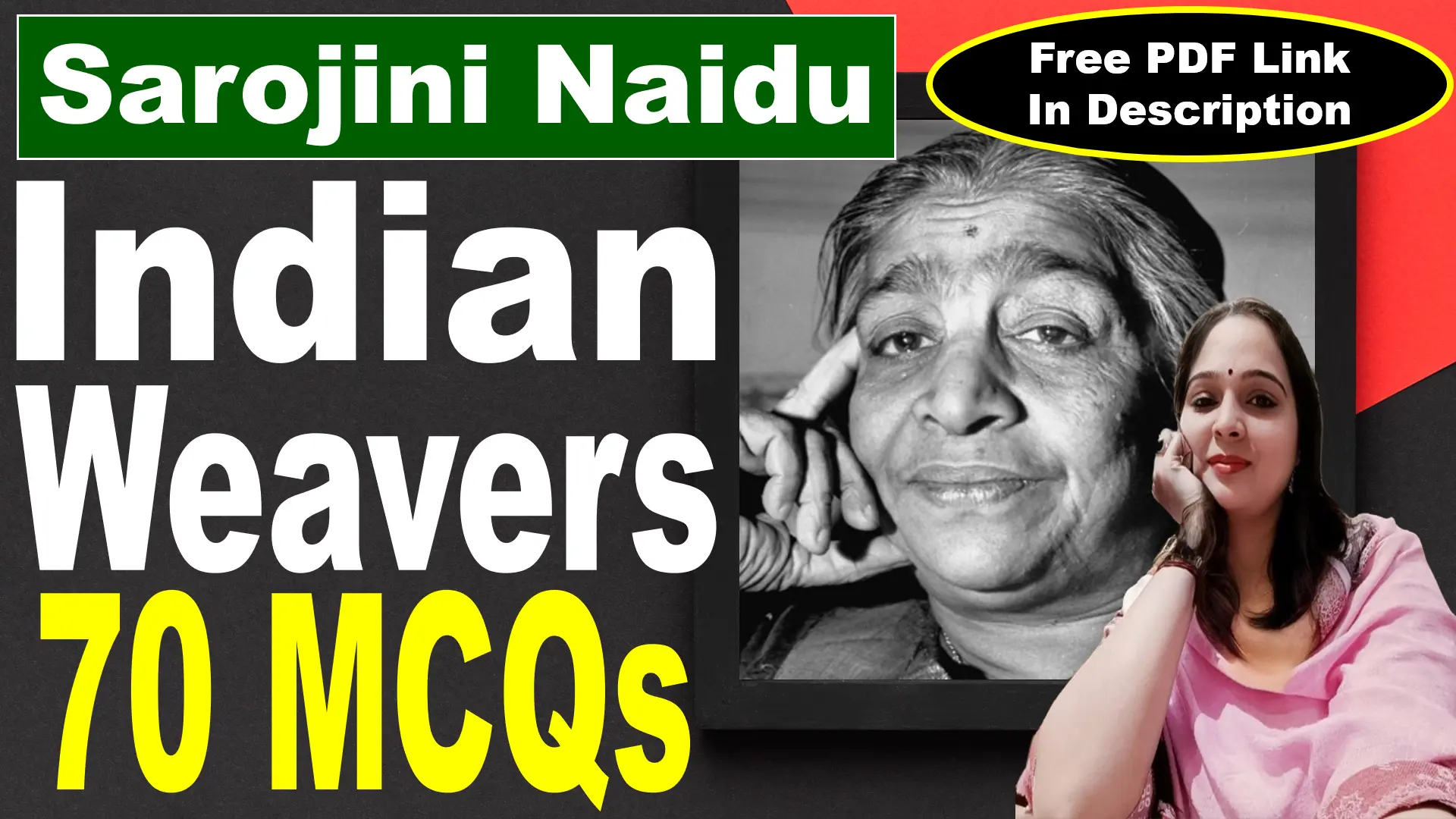
Space-Time Continuum by VK Gokak | Space-Time Continuum | VK Gokak | Vinayak Krishna Gokak | Explanation | Summary | Key Points | Word Meaning | Questions Answers | Critical Appreciation | Themes | Free PDF Download – Easy Literary Lessons
Space-Time Continuum
When Siva danced his sun-moon dance,
Parvati watched entranced
And grew older every minute
Towards a doomsday
That dogged her steps.
As Parvati watched him dance,
Siva’s dance gained an ever-varying tempo
And the gestures of his eyes and limbs
Were like thunder and lightning in the sky.
The improbable rhythms of his dance
Obscured the dancing lover.
It was as though ever-revolving cameras
Focussed on and filmed
An ever-changing scene.
It was as though creation—
The myriad fragments of Reality—
Were being fashioned and refashioned
Every successive second.
The illusion of stability
That ever-revolving earth creates
Was shattered and dissolved
In an unending flux.
But when Siva saw with his forehead eye,
He beheld Parvati as his own well-beloved,
The lovely and eternal bride
When Parvati watched the dance
With the eye of her soul,
She saw the dancer rather than the dance.
It was Siva, her primordial lover,
Whom she had met before the dawning of days.
At such moments their love was intense
And they became one—
The androgynic God,—
Ardhanarishwara—
Eternal,
Infinite.
Space-Time Continuum by VK Gokak: YouTube Link
Space-Time Continuum Poem Analysis
When Siva danced his sun-moon dance,
Parvati watched entranced
And grew older every minute
Towards a doomsday
That dogged her steps.
Explanation: In these opening lines, the poet describes the cosmic dance of Siva, often called the Tandava, which symbolizes the cycles of creation, preservation, and destruction in the universe. The “sun-moon dance” reflects the balance of opposites—day and night, light and dark, life and death. Siva’s dance is not just a physical act but a profound metaphor for the cosmic processes that govern existence.
Parvati, Siva’s consort, watches this divine dance with deep fascination (“entranced”). As she observes, time seems to accelerate for her, and she feels herself aging quickly (“grew older every minute”). This represents the fleeting nature of time and how witnessing such a powerful event can heighten one’s awareness of mortality. The “doomsday that dogged her steps” symbolizes the inevitability of death and destruction, which is an integral part of the cosmic cycle. Parvati’s experience reflects how time and existence are transient, subject to the greater forces of the universe.
Poetic devices:
Imagery: The “sun-moon dance” creates a vivid picture of opposites in harmony, symbolizing the cosmic balance of the universe.
“Grew older every minute” evokes the sensation of time slipping away, intensifying the transient nature of existence.
Symbolism: The “sun-moon dance” symbolizes duality and balance in the universe (light/dark, creation/destruction).
“Doomsday” symbolizes the ultimate end that comes with time, a reminder of mortality and the cyclic nature of the cosmos.
Alliteration: “Doomsday that dogged” uses repetition of the ‘d’ sound to emphasize the inevitability of destruction and the passage of time.
Personification: “Doomsday” is personified as something actively following Parvati, creating a sense of urgency and inevitability.
Enjambment: The lines flow into each other without a pause, mirroring the continuous and unstoppable flow of time and the dance.
Contrast: The “sun-moon dance” contrasts with Parvati’s aging and the approaching “doomsday,” highlighting the tension between cosmic eternity and human mortality.
As Parvati watched him dance,
Siva’s dance gained an ever-varying tempo
And the gestures of his eyes and limbs
Were like thunder and lightning in the sky.
The improbable rhythms of his dance
Obscured the dancing lover.
Explanation: In these lines, the poet continues to describe the cosmic dance of Siva, as perceived by Parvati. Siva’s dance becomes increasingly dynamic, with its “ever-varying tempo” symbolizing the constantly changing rhythms of the universe—creation, preservation, and destruction happening in unpredictable cycles. His movements are likened to “thunder and lightning in the sky,” evoking a sense of power, chaos, and intensity. This comparison portrays Siva’s dance as a cosmic phenomenon of immense energy, akin to natural forces that shape the world.
As the dance grows more complex, the focus shifts from Siva himself to the overwhelming spectacle of the dance. The “improbable rhythms” reflect how the universe operates in ways beyond human comprehension, where time, motion, and events follow patterns that seem chaotic but have a deeper purpose. This intense display “obscured the dancing lover,” meaning that the grandeur of the dance overshadows Siva’s identity as a divine being. To Parvati, Siva momentarily becomes less of a personal figure and more of a cosmic force, highlighting the tension between divine transcendence and intimacy.
Poetic Device:
Imagery: “Thunder and lightning in the sky” creates a vivid picture of the energy and power of Siva’s dance, likening it to a storm.
“Ever-varying tempo” paints the dance as fluid and unpredictable, capturing the dynamic nature of existence.
Symbolism: The dance symbolizes the cosmic cycles of creation, destruction, and renewal.
“Thunder and lightning” symbolize power, destruction, and the raw forces of nature.
Alliteration: “Gestures of his eyes and limbs” uses repetition of the ‘g’ sound to draw attention to the fluidity of Siva’s movements.
Metaphor: The “improbable rhythms” of the dance serve as a metaphor for the complex and unpredictable patterns of the universe.
Personification: The dance itself is personified, taking on a life of its own, separate from Siva, as it “obscures the dancing lover.”
Contrast: The contrast between the personal (Siva as a lover) and the cosmic (his dance as a force of nature) underscores the duality of Siva’s identity.
Enjambment: The lines flow into one another, mirroring the continuous and unstoppable motion of Siva’s dance.
It was as though ever-revolving cameras
Focussed on and filmed
An ever-changing scene.
It was as though creation—
The myriad fragments of Reality—
Were being fashioned and refashioned
Every successive second.
The illusion of stability
That ever-revolving earth creates
Was shattered and dissolved
In an unending flux.
Explanation: In these lines, the poet uses vivid imagery to describe the nature of Siva’s dance and its relation to the universe. The dance is likened to “ever-revolving cameras” filming an “ever-changing scene,” symbolizing the constant motion and dynamism of the universe. Just as a camera captures fleeting moments of reality, Siva’s dance represents the ongoing process of creation, destruction, and renewal. This comparison highlights the ephemeral and fragmented nature of existence.
The poet suggests that creation is not a static event but a continuous process, with “myriad fragments of Reality” being formed and reformed every second. This dynamic view aligns with the idea of the space-time continuum, where nothing is permanent, and all things are subject to change. The “illusion of stability” created by the Earth’s rotation is described as deceptive; while the Earth appears stable to us, it is constantly in motion, both physically and cosmically.
Through Siva’s dance, the poet dissolves this illusion, revealing the “unending flux” of reality. This phrase captures the essence of impermanence and the ever-evolving nature of life, time, and the universe itself. The lines suggest that stability is a comforting but false perception, shattered by the realization of the true, ever-changing nature of existence.
Poetic Device:
Imagery: “Ever-revolving cameras” and “ever-changing scene” create a dynamic visual of constant motion, emphasizing the fleeting and transient nature of creation.
“Fragments of Reality” conjure images of a shattered whole, representing the complexity and incompleteness of the universe.
Metaphor: The “ever-revolving cameras” serve as a metaphor for time, capturing each moment as it transforms into the next.
The “illusion of stability” symbolizes our false perception of permanence in a constantly shifting universe.
Symbolism: The Earth’s “revolving” and the “unending flux” symbolize the cyclical, continuous nature of time and existence.
Enjambment: The lines flow seamlessly into each other, reflecting the continuous and unbroken nature of time and change.
Contrast: The contrast between “illusion of stability” and “unending flux” underscores the theme of impermanence.
Personification: Reality is personified as being “fashioned and refashioned,” suggesting an active, deliberate process of creation.
But when Siva saw with his forehead eye,
He beheld Parvati as his own well-beloved,
The lovely and eternal bride
When Parvati watched the dance
With the eye of her soul,
She saw the dancer rather than the dance.
Explanation: These lines mark a turning point in the poem, shifting from the overwhelming cosmic spectacle of Siva’s dance to a more intimate and spiritual connection between Siva and Parvati. The “forehead eye” refers to Siva’s third eye, a symbol of divine insight and deeper perception. Through this eye, Siva perceives Parvati not just as an observer of his cosmic dance but as his “own well-beloved,” emphasizing their eternal bond and unity.
Similarly, when Parvati watches the dance with the “eye of her soul,” she shifts her focus from the transient and chaotic movements of the dance (symbolizing the distractions and illusions of life) to the essence of the dancer—Siva himself. This represents a profound spiritual awakening, where she moves beyond the external spectacle to recognize the eternal and unchanging truth embodied in Siva.
This mutual recognition symbolizes a union of the physical and the spiritual, the temporal and the eternal. Parvati’s realization highlights the importance of seeing beyond surface appearances (the dance) to understand the deeper reality (the dancer). Together, these lines encapsulate the theme of transcendence and eternal love.
Poetic Device:
Symbolism: The “forehead eye” symbolizes divine knowledge and the ability to see beyond ordinary reality.
The “eye of her soul” represents spiritual awakening and the capacity to perceive eternal truths.
Parvati as the “eternal bride” symbolizes timeless love and unity, transcending physical existence.
Imagery: “Lovely and eternal bride” creates a vivid image of Parvati as a symbol of divine beauty and permanence.
The contrast between the “dancer” and the “dance” highlights the distinction between eternal truth and transient reality.
Contrast: The dance (representing impermanence and chaos) is contrasted with the dancer (Siva, representing eternal stability and truth).
Parvati’s initial perception of the overwhelming dance evolves into a deeper understanding of the dancer, symbolizing the journey from illusion to enlightenment.
Enjambment: The lines flow naturally into one another, reflecting the seamless transition from physical observation to spiritual understanding.
It was Siva, her primordial lover,
Whom she had met before the dawning of days.
At such moments their love was intense
And they became one—
The androgynic God,—
Ardhanarishwara—
Eternal,
Infinite.
Explanation: In these lines, the poem reaches its climax, emphasizing the eternal and transcendental love between Siva and Parvati. Siva is described as Parvati’s “primordial lover,” indicating that their connection transcends time and space, existing even “before the dawning of days.” This imagery situates their love in a realm beyond the physical, highlighting its cosmic and eternal nature.
The poet illustrates moments of intense unity when Siva and Parvati transcend their individual identities to become “one”—manifesting as Ardhanarishwara, the androgynous form of the divine that combines masculine and feminine energies. This form symbolizes the ultimate harmony and balance of opposites, representing the union of creation and destruction, motion and stillness, and the dynamic interplay of all dualities in the universe.
The adjectives “eternal” and “infinite” emphasize the timeless and boundless nature of their love and their divine essence. By merging into Ardhanarishwara, they embody the inseparability of the cosmic forces that govern existence, making their unity not just a personal bond but a profound symbol of universal balance.
Poetic devices:
Imagery: “Before the dawning of days” evokes a sense of timelessness and situates their love in a pre-creation, primordial realm.
“Ardhanarishwara” conjures a vivid image of the androgynous form, blending masculine and feminine energies into one.
Symbolism: “Primordial lover” symbolizes a love that predates time, representing eternal unity and the divine connection between Siva and Parvati.
“Ardhanarishwara” symbolizes the cosmic balance of opposites and the ultimate union of complementary forces.
Enjambment: The lines flow smoothly into one another, reflecting the seamless merging of Siva and Parvati into a single, divine entity.
Contrast: The individuality of Siva and Parvati contrasts with their unified form as Ardhanarishwara, highlighting the dissolution of dualities.





